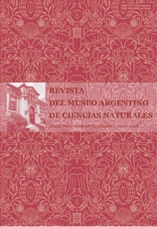Análisis evolutivo de la vegetación cenozoica en las provincias de Chubut y Santa Cruz (Argentina) con especial atención en las comunidades herbáceo-arbustivas
Resumen
The vegetational evolution from Chubut andSanta Cruzduring the Cenozoic, considering fossil spore-pollen assemblages, was analized. Particular attention was placed on herbaceous and shrubby communities. A vegetation dominated by tropical elements would have developed during the Paleocene. No evidence of open vegetation was recorded. Similar communities were recognized at the Early Eocene, being later replaced by "mixed" forests with both neotropical and antarctic elements occuppying most of emerged lands. Great paleogeographic and tectonic events affectedPatagoniaduring the Oligocene and even more clearly at Early Miocene. An expansion of open vegetation patches with Chenopodiaceae, Ephedraceae, Asteraceae and Poaceae (common in recent patagonian steppe) was registered. However, forests were still abundant. From Late Miocene, xerophitic conditions were established in the patagonian coast, with a shrubby vegetation dominating the area. No spore pollen records for the Pliocene nor for most Quaternary are available. Spore-pollen assemblages for Late Pleistocene and Holocene suggest vegetational changes, likely linked with atmospheric circulation patterns and glaciation, gradually reaching the current phytogeographic configuration.
Texto completo:
PDFEnlaces refback
- No hay ningún enlace refback.

This work is licensed under a Creative Commons Attribution 3.0 License.

